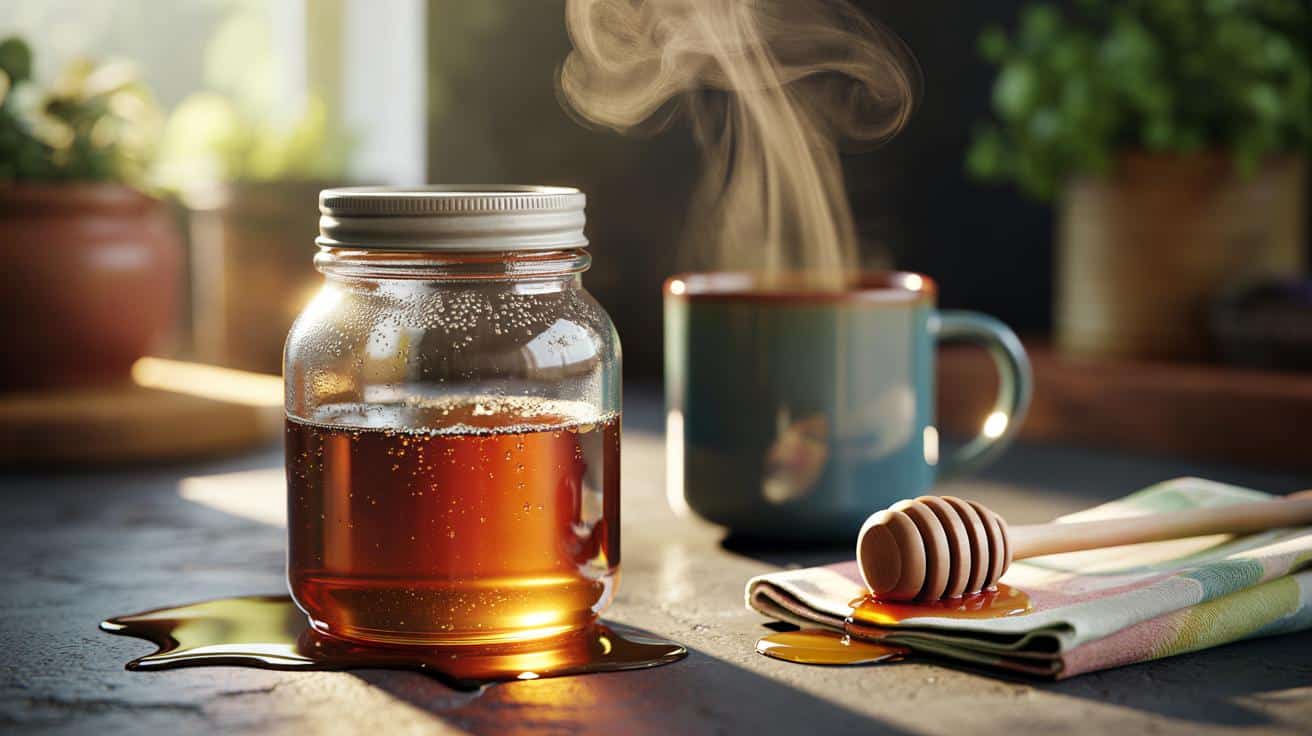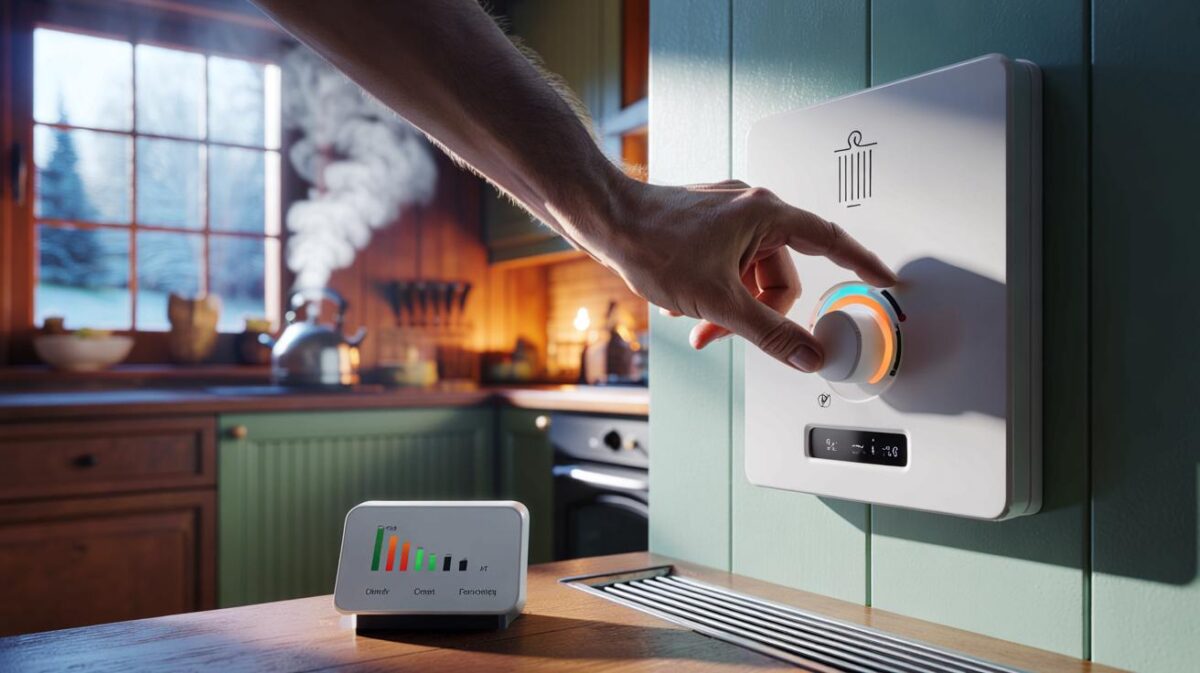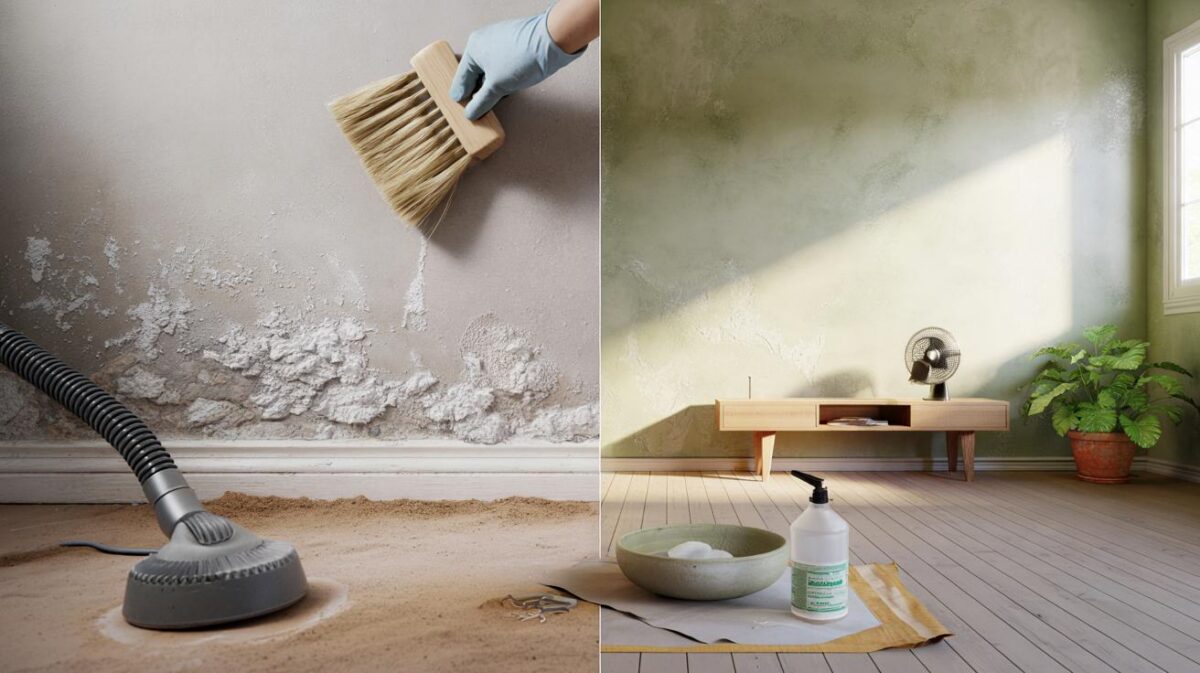A quick twist, a lazy dip of the spoon, a ribbon of gold over the steam. I didn’t think twice as the lid clinked back on, tacky with tiny sugar crystals. A week later the honey smelled a bit odd, and a faint fizz kissed the surface. I blamed the brand. I blamed the cupboard. I almost threw it out.
Then I noticed the halo of dried syrup on the rim and the thin ring of condensation under the lid. That’s when it clicked.
One small habit was ruining the whole jar. And it’s everywhere.
The hidden splash that ruins good honey
Here’s the twist: the enemy of honey isn’t air, it’s water. Honey is naturally low in water, which is why it keeps for ages on the shelf. Add just a little moisture and the balance shifts fast.
The most common way it sneaks in? Dipping a wet spoon. Or holding your jar above a steaming mug while you drizzle. Those wisps of steam look harmless, but they condense on cool glass and the metal threads of the lid. Tiny droplets slide inside. You don’t see them. Your honey does.
I met a hobby beekeeper in Kent who keeps a crate of jars under the stairs like precious books. She told me she can smell a “wet” jar before she sees it. The top looks loose, like a soft foam. People think it’s fermentation out of nowhere. It isn’t out of nowhere.
Honey starts life around 17% moisture. Push it past about 18–20% and osmophilic yeasts wake up and throw a party. A little fizz, a tang, a whiff of cider — that’s the signal. You didn’t buy a bad jar; you gave it water. We all know that moment when a cosy tea becomes a shrug-and-stir routine that ends with a sticky lid and a small regret.
Crystallisation isn’t the villain here. Crystals are just glucose settling into order, and they melt back with gentle warmth. What ruins flavour and texture is water plus heat. Steam condenses under the lid, drips back in, and the top inch gets diluted first. That’s why the trouble often shows as a ring near the surface.
Once fermentation starts, it spreads. Not dangerous for adults, but the honey you loved tastes off, sometimes sharp, sometimes boozy. The fix isn’t complicated. It’s habits.
Simple habits that keep your jar perfect
Put the jar down away from steam. Spoon honey at the counter, then walk it to the mug. Use a bone-dry spoon, and wipe the rim if it picks up syrup. Close the lid snug, not gorilla-tight, and stash it in a cool, dark cupboard.
I learned the hard way. If your honey crystallises, slide the open jar (lid off) into a warm water bath, about 35–40°C, and give it time. A towel in the pan stops the glass rattling. Stir once or twice. That’s it. **Use a warm water bath, not a microwave.** Microwaves leave hot spots that cook the enzymes and can warp plastic.
You don’t need fancy kit. You need patience and a dry tool. **Don’t refrigerate** your jar unless you’re trying to turn speed into crystals. The fridge pushes crystallisation along and makes people panic and reheat too hard. Let’s be honest: nobody really does that every day.
The old myths linger. Metal spoons are fine. The enemy isn’t silver, it’s moisture. Pouring honey straight over a steaming mug is the sneaky culprit that gets you. And the quick blast in the microwave? It “fixes” the crystals, yet it can flatten the floral notes you love. Be kind to your jar, and it will be kind back.
One tip from a pro keeps echoing in my head.
“Treat honey like a living pantry friend,” says Jess, a London beekeeper. “Keep it dry, keep it warm-not-hot, and it will outlast the mug you’re holding.”
- **Keep water out of the jar** — dry spoon, lid wiped, no steam hovering.
- Store at room temperature, away from sunlight. A cupboard is perfect.
- Decrystallise slowly in warm water, never boiling, never direct heat.
- If the top smells vinegary or fizzy, that jar’s crossed the line. Use it in baking, not in tea.
A sweeter way to live with your honey
Honey rewards small rituals. Set the jar down away from the kettle. Take a breath. Scoop, drizzle, enjoy. It’s a 10-second detour that saves you money and preserves that wildflower burst you paid for.
There’s a deeper rhythm behind it all: keep water out, keep heat gentle, keep flavour alive. The first spoon of the jar should taste like the last. That’s not fussy. That’s respect for bees, and for the weather and blossoms they worked through.
Next time a friend complains their honey went weird, you’ll know what to say. Tell them about steam, and lids, and slow warmth. Share a spoonful that lands like sunshine on toast. The habit travels. The jar lasts. Your kitchen feels calmer.
| Point clé | Détail | Intérêt pour le lecteur |
|---|---|---|
| Keep water out | Use a dry spoon, avoid steam, wipe the rim, close the lid gently | Prevents fermentation and off flavours |
| Decrystallise gently | Warm water bath at 35–40°C, stir once or twice | Preserves enzymes and floral notes |
| Room-temperature storage | Dark cupboard, away from direct heat and light | Maintains texture and taste without fuss |
FAQ :
- Should honey be kept in the fridge?No. The fridge accelerates crystallisation and tempts you to overheat it later. A cool, dark cupboard is the sweet spot.
- Is crystallised honey bad or unsafe?Not at all. Crystals are natural and reversible. Warm it gently in a water bath and the silkiness returns.
- My honey smells fizzy or sour at the top — what now?That’s likely fermentation from added moisture. It’s not unsafe for adults, but the taste is off. Bake with it or compost it, then start fresh with drier habits.
- Can I microwave honey to speed things up?You can, but you’ll risk uneven heating and dull flavour. Warm water is slower and smarter. Think minutes, not seconds.
- Is raw honey safe for children?Raw honey is not for infants under one year due to the risk of infant botulism. Over one year old, it’s fine in normal kitchen amounts.










I always blamed the brand too—turns out I was steaming my jar over the mug. This explains the weird cider smell. Great tip about the 35–40°C water bath and skipping the microwave. Thanks!